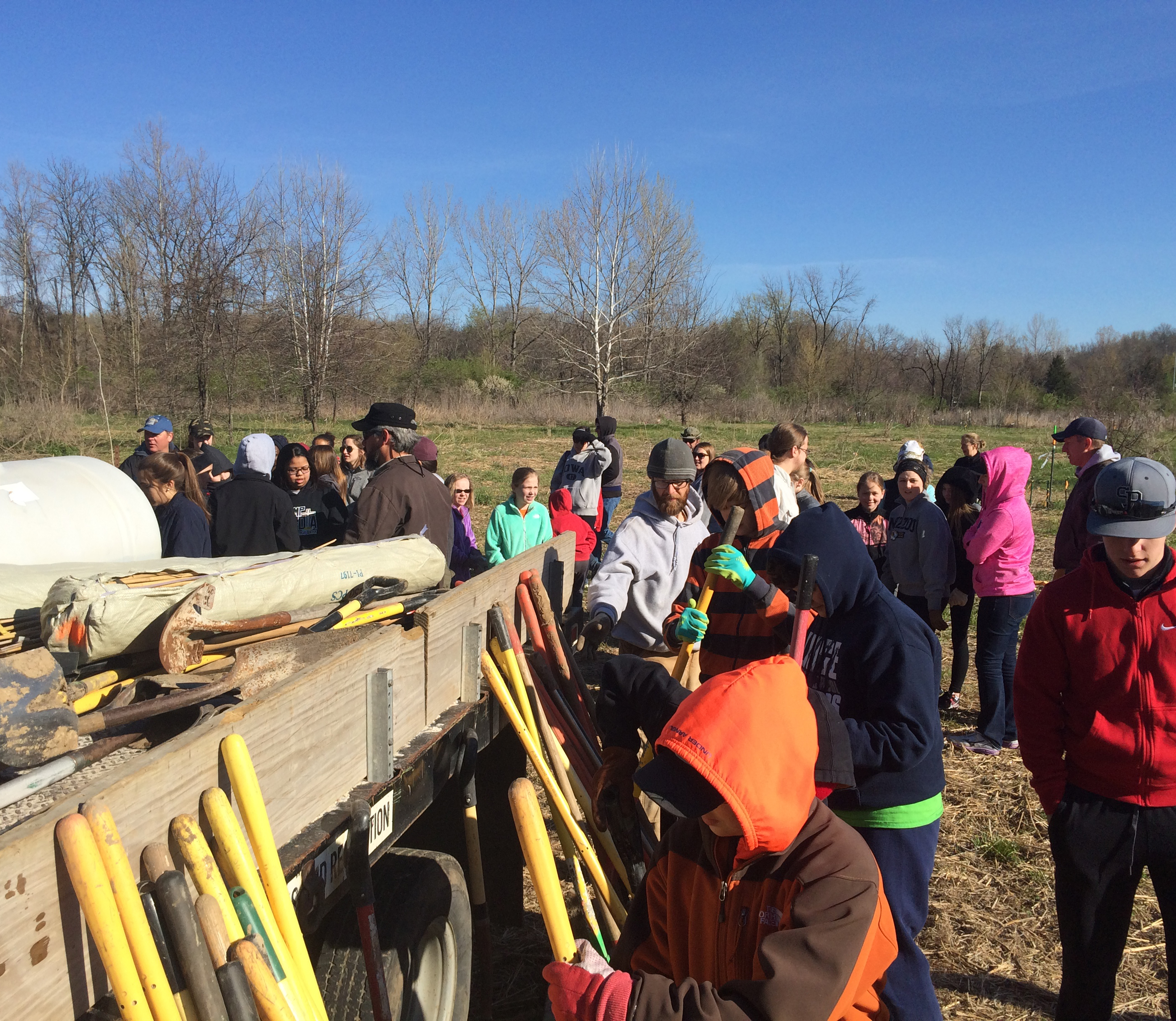Email education@heifer.org to get in touch with your local Heifer community engagement coordinator

Columbia, Missouri is a pretty college town that is home to one of the most amazing group of Heifer volunteers I’ve ever had the pleasure of knowing, the Mid-Missouri Heifer Group. Dozens of people are part of the Heifer network in Columbia, ranging from teenagers to octogenarians, high-schoolers to college administrators to retirees. I recently had the opportunity to spend a weekend with them and spoke at 14 different events, including a Parks and Recreation tree planting event and a local talk radio show. This Heifer blitz was the handiwork of diverse Heifer volunteers sharing their enthusiasm within their circles of school, work colleagues, faith and friends.
We talk a lot about building sustainable communities, usually in regard to our development work with smallholder farmers. But Columbia is an example of sustainable community building at home, where there is a broad spectrum of people and organizations that are committed to joining with Heifer and each other to end hunger and poverty. The connection between these different groups is a powerful factor in this community's success. Many cities have numerous faith communities, schools and civic groups that regularly support our work, but more often those supporters do so independently. In Columbia, networking brings the diverse populations together in such a way that they share information, resources and oftentimes collaborate. This network leverages the members’ respective spheres of influence to multiply the impact of their actions on Heifer’s behalf.

The current Columbia network includes several churches of various denominations, Rock Bridge High School (a public high school with a Heifer Club) and both academic departments and a sorority at the University of Missouri. But the second factor of success for Mid-Missouri is their outreach beyond those who regularly meet. The Mid-Missouri Heifer Group creates a ripple effect by reaching out with a monthly newsletter sharing their ideas, opportunities and needs that goes to about 75-80 other existing local supporters. Beyond that, new relationships are sought and cultivated. High school students lead Read to Feed in a neighboring elementary school. A local private school is discussing ways to integrate Heifer into their curriculum next year. A sorority member with FFA connections gets a spot at the upcoming statewide annual convention. Just this weekend three brand new opportunities to collaborate came up: a local hunger non-profit, a service organization on Stephens College and the Missouri Youth Institute (a World Food Prize affiliated program for high school students across the state).
At the core, as you might expect, are strong advocates that are key to linking everyone together. These folks are the ones I know and get to work with as their Heifer contact. Around this core are others: academics, civic and church contacts, and students of all ages that are active but connect to Heifer through these local leaders and their network. The collective efforts of the leaders and their respective spheres of influence mean various “Heifer groups” learn and act together, building a stronger, more inclusive community of support.
When asked, the members of the Mid-Missouri group are quick to brag on each other and how much each of them brings to the table with their various skills and backgrounds. But they insist as a group that they’re not doing anything particularly unique, that Heifer advocates pulling together and allowing their influence and passion to ripple out across their various communities can replicate what they've accomplished in Columbia. I know Heifer Volunteers are amazing people, so I think they may be right.
Story and photos by Cindy Sellers Roach, Heifer International Community Engagement Manager
Header photo by Filippo Ascione